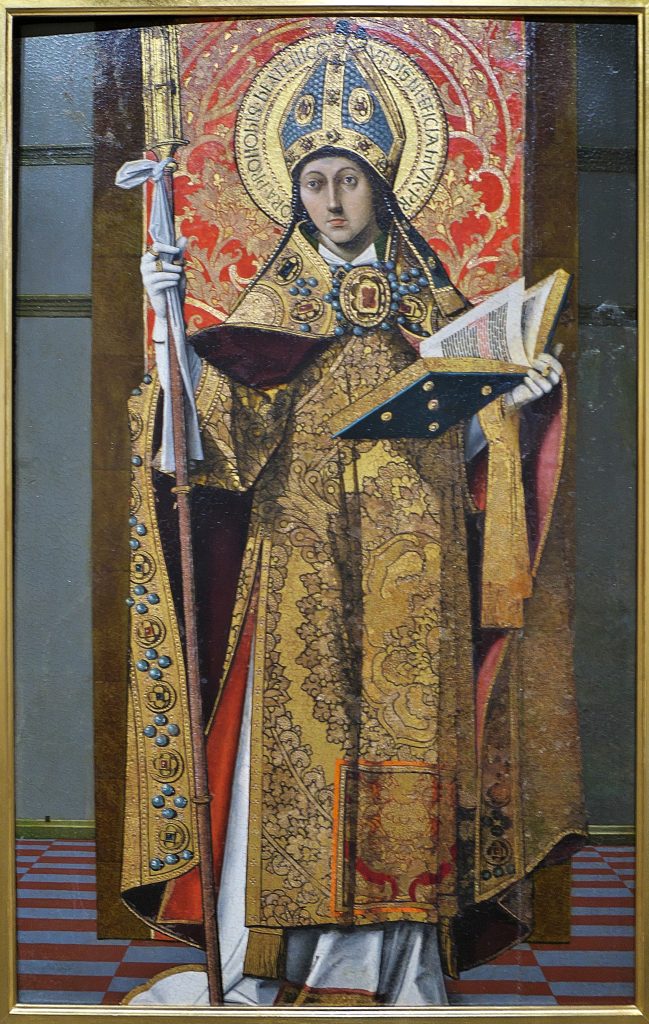The vast majority of people know that this Christmas, as in all previous ones, there will be a moment dedicated to storytelling. Whether it's family stories, tales for the little ones or that romantic movie on TV, storytelling is a typical element of Christmas, along with the polvorones, gifts and decorations.
There is a character from this period who is known practically all over the world, even though he is not the really important one, who is Christ, but a good friend of his: Saint Nicholas of Bari. If the name doesn't quite fit, maybe it sounds more like his pseudonym: Santa Claus.
Before the bearded man conquered the shop windows, the figure of Santa Claus was much more reminiscent of St. Nicholas, a 4th century bishop who inspired folklore to create the legend of Santa Claus.
The origin
Little is known about the real life of Nicholas of Bari. He was born under the rule of the Roman Empire and some say that he attended the First Council of Nicaea. It seems that he came from a well-to-do Christian family and that he was named bishop almost by chance. With more certainty it can be affirmed that he was a very generous man and at his death people were already very devoted to him.

After Nicholas' death, Emperor Theodosius had a church built on the site of his episcopal see to venerate his relics. However, the saint's bones were moved several times, as merchants and devotees moved his remains from city to city. The current location of the body of St. Nicholas of Bari is a controversial matter that is in the hands of archaeologists.
But how can it be that a person we know so little about has become one of the most recognizable figures of Christmas? This is where the legend comes into play.
The story goes that St. Nicholas of Bari rescued three young women whose father was in ruins. Unable to arrange marriages for lack of money or means to survive, the three women were destined for prostitution. Upon learning of this, the bishop threw a bag of gold coins out of a window of the house, unnoticed by anyone. When the father found it, he was able to marry the eldest daughter because he had a dowry. Shortly after, Nicholas of Bari repeated the gesture. The second daughter was also able to celebrate her marriage.
In his third act of generosity, the benefactor did not manage to go unnoticed. The father noticed and could only kneel before the bishop to thank him for his gesture. St. Nicholas asked the man not to tell anyone about the origin of the three gifts. That is why today it is the most famous story of the saint.
Santa Claus and Saint Nicholas
The figure of Santa Claus is based on part of this story. Some variations of the story tell that Saint Nicholas dropped the coins down the chimney of the house (just as today Santa Claus goes down that narrow channel), so the gold fell into some stockings that the young girls had left to dry (and that is why the socks have to be hung in the chimney every year).
The saint is also said to have rescued several children. Apparently, during his lifetime, he resuscitated three little ones who had died after falling from a tree. He also interceded to bring back to life some children murdered by a cruel innkeeper. He even rescued a child during World War II. The child's mother lost sight of him during a bombing raid on the city of Bari. Hours later, the little boy appeared at the door of the house completely unharmed, explaining that a St. Nicholas had protected him and helped him to return.
But the bishop's relationship with the Christmas is not something new. Since the Middle Ages it has been customary to give gifts to the little ones, for whom St. Nicholas clearly watched over, on the eve of his feast day, December 6.
San Nicolás today
This beautiful reminder has taken its present form through the influence of other European figures and legends. These include "Father Christmas," a character from a 15th century English poem; "Sinterklaas," a majestic old man who wears a cloak and draws from the culture of the Netherlands, Switzerland and Belgium; and "Mikulás," a legendary character of the Hungarian people.
With the passage of time, the memory of St. Nicholas of Bari, his gifts and his appreciation for children has been deformed. The Santa Claus we know today came through reinterpretations of European traditions in the United States. Little by little, the Christian saint was transformed from a cartoonist's drawing to the old man dressed in red and white (that the colors are due to a well-known brand of beverages is also part of the legend).
Some countries consider Santa Claus to be the result of taking God away from Christmas, making this season lose its essence. For others, it is a commercial claim that invites consumption. However, no one can take away from Catholics their Saint Nicholas, who functions as a precursor of the most important day of these dates and who, as a good student of his Master, brought to life that famous phrase: "Let the little children come to me" (Matthew 19,14).









